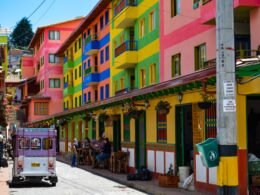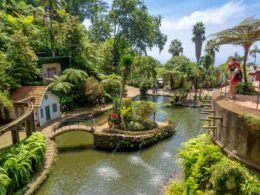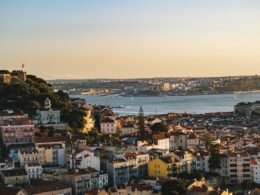For a country that’s relatively small, Denmark has a lot to offer. You can visit bustling cities, admire the coastline in small fishing towns, marvel at the country’s architecture, and walk through its historical sites. If you only have 1 week to spend in Denmark, here’s how to make the most of it.
Introduction:
How this itinerary works:
- On the first 3 days of your trip, you’ll spend your time in the Danish capital of Copenhagen.
- Then, for the next 2 days, you’ll take 2 day trips from Denmark’s capital city: One to explore 2 castles, and another day trip to a village called Dragør.
- On the last 2 days of your visit, you’ll stay in Aarhus and see what makes the second-largest city in Denmark so special.
You can adapt this itineary:
Although this article is for a 7-day trip to Denmark, please feel free to adapt it to your travel needs, for example, if you only have 3 days in Denmark, you could do 2 days in Copenhagen, then a day trip to Frederiksborg Castle. All of the itineraries written on Earth Curious can be taken and split down day by day for total flexibility.
Editorial note:
Before we begin, a little editorial note, our goal with this itinerary is to make it super easy to follow. We provide Google Maps links to all of the major places we talk about, this includes sights, hotels, and restaurants! In addition, this guide was last updated in March 2023.
Now, let’s get started with your itinerary for the place that is consistently named the “happiest country in the world.”
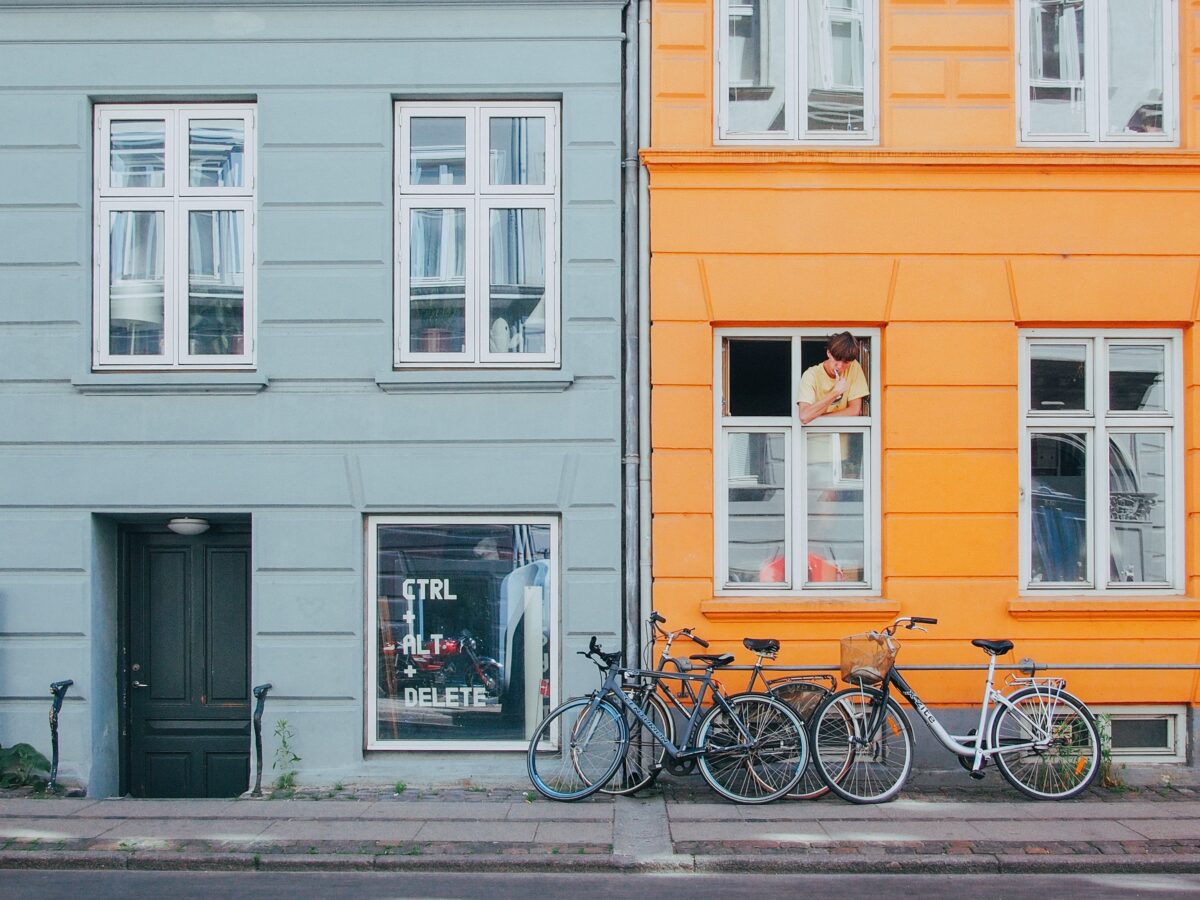
Day 1: Copenhagen
As the capital city of Denmark, Copenhagen has plenty of cool things to experience. The city offers a mix of charming historical sites, trendy restaurants, and an effortless modern Scandivanian atmosphere. On your first day, you will get settled in the city and explore Copenhagen’s most well-known attractions.
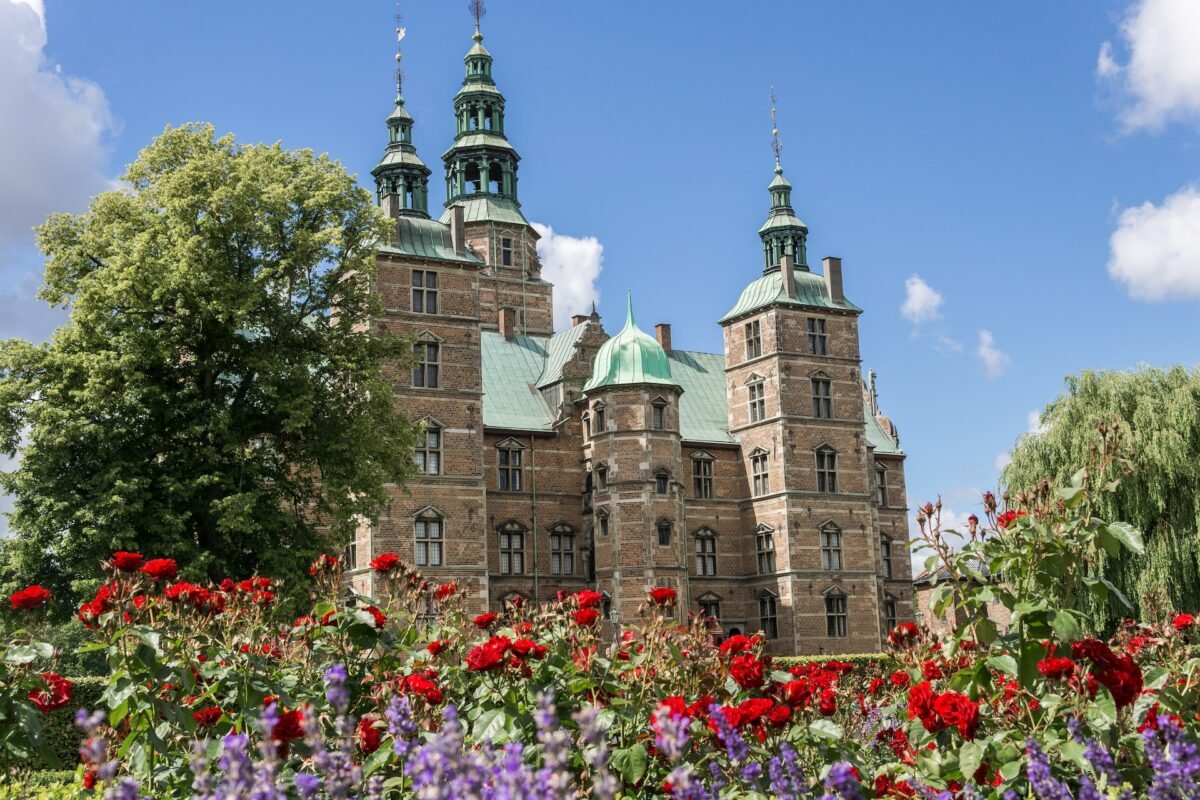
What to do and see in Copenhagen, day 1:
Rosenborg Castle – Google Maps Link
Start the day with a visit to Rosenborg Castle and the King’s Garden. The castle, built by Christian IV in the 17th century, is a beautiful Renaissance-era structure. The architecture is stunning, and the inside is lavishly decorated. The Knights’ Hall has three full-size silver lions standing guard over the coronation thrones. You’ll also see Denmark’s crown jewels in a secure vault at the castle.
After exploring the interior, wander the gardens which have been converted into a public park.
Amalienborg Palace – Google Maps Link
Next, head to Amalienborg Palace, home of Denmark’s current monarch, Margrethe II. Show up in time to see the new guard march through the city centre at 11:30 am for the changing of the guard at noon. If you are very lucky, you might even see one of the royal family members driving out of the palace area, so keep your eyes peeled.
At the Amalienborg Museum, you can get an idea of what the rooms of different monarchs looked like. After leaving the museum, you’ll be near Frederik’s Church, an impressive church with distinctive rococo architecture.
Nyhavn (New Harbour) – Google Maps Link

This is perhaps what you have been waiting for, when you see Copenhagen advertised, it’s often with an image of Nyhavn.
In the afternoon, spend time exploring Nyhavn (New Harbour). This buzzing canal district is full of bright townhomes that house bars, restaurants, and cafes. Author Hans Christian Andersen lived in several different houses in this district during his lifetime.
Take a canal tour to cruise around and learn more about the history of the area.
Where to eat in Copenhagen, day 1?
While in Nyhavn, it’s a lot of fun to eat at the restaurants and cafes right on the canal.
- For a traditional Danish lunch or dinner, head to Hyttefadet.
- For Japanese cuisine made with fresh Scandinavian ingredients, try out Damindra.
- For a cozy atmosphere, go to Faergekro to try out the delicious daily lunch buffet featuring unfussy Danish food.
Where to stay in Copenhagen?
- $$$ – Manon Les Suites
- $$ – Kanalhuset
- $ – Steel House Copenhagen
Day 2: Copenhagen
Get ready for another full day of visiting Denmark’s largest city. Copenhagen is well-designed with infrastructure that makes the city compact and accessible. It’s easy to get around the city to explore. Today, you’ll be visiting several sites that give you a glimpse of the area’s rich cultural heritage.

What to do and see in Copenhagen, day 2?
The Little Mermaid – Google Maps Link
Start the morning off at the Langelinie promenade to see The Little Mermaid Statue inspired by the Hans Christian Andersen fairytale. The small sculpture created by Edvard Eriksen in the early 1910s is one of the city’s most visited attractions.
I have to say, when I visited the statue it was a lot smaller than expected, and other people reviewing the attraction have said the same. So, if you only have one day in Copenhagen I would personally skip this.
Kastellet – Google Maps Link
Near the sculpture, you can visit the Kastellet. This star-shaped citadel was built in 1626. The building houses military barracks and offices, but the area is open to the public and has good walking paths.
Design Museum Denmark – Google Maps Link
Then, make your way to the Design Museum Denmark. The museum highlights Denmark’s best pieces of design including architecture, furniture, consumer goods, and fashion. Danish design, and Scandinavian design in general, has a very specific look, so it’s interesting to learn more about the history of Danish design here.
The Round Tower – Google Maps Link
In the afternoon, visit the Round Tower. The observatory was built in the 17th century and is still used by amateur astronomers today. You can look out at Copenhagen on the observatory’s outdoor platform. Besides the observatory, the tower also has a library hall which has been turned into an exhibition space.
Tivoli Gardens – Google Maps Link
You can’t visit Copenhagen without going to Tivoli Gardens, so visit the world’s second-oldest amusement park in the evening. The park is at its most magical with the lights on in the dark, and the fireworks and lights show is worth seeing. Note: the amusement park does close for small periods throughout the year, so be sure to check out the park’s website before deciding to visit.
Where to eat in Copenhagen, day 2?
- At lunchtime, try out Nyboders Kokken, a welcoming little restaurant serving traditional Danish cuisine.
- Another good option for traditional Danish food is Restaurant Skindbuksen, one of Copenhagen’s oldest restaurants which first opened in 1728 as a tap room.
- For something a touch fancier, try out Amalie. This restaurant, which also serves traditional Danish cuisine, has been in the Michelin guide several times.
Day 3: Copenhagen
You could spend days just exploring everything Copenhagen has to offer, but today will be your third full day in Copenhagen because you’ll still want to have time to see more in Denmark. You head to one more of the city’s most popular attractions in the morning. Then, you can explore a few sites that not every tourist makes it to.
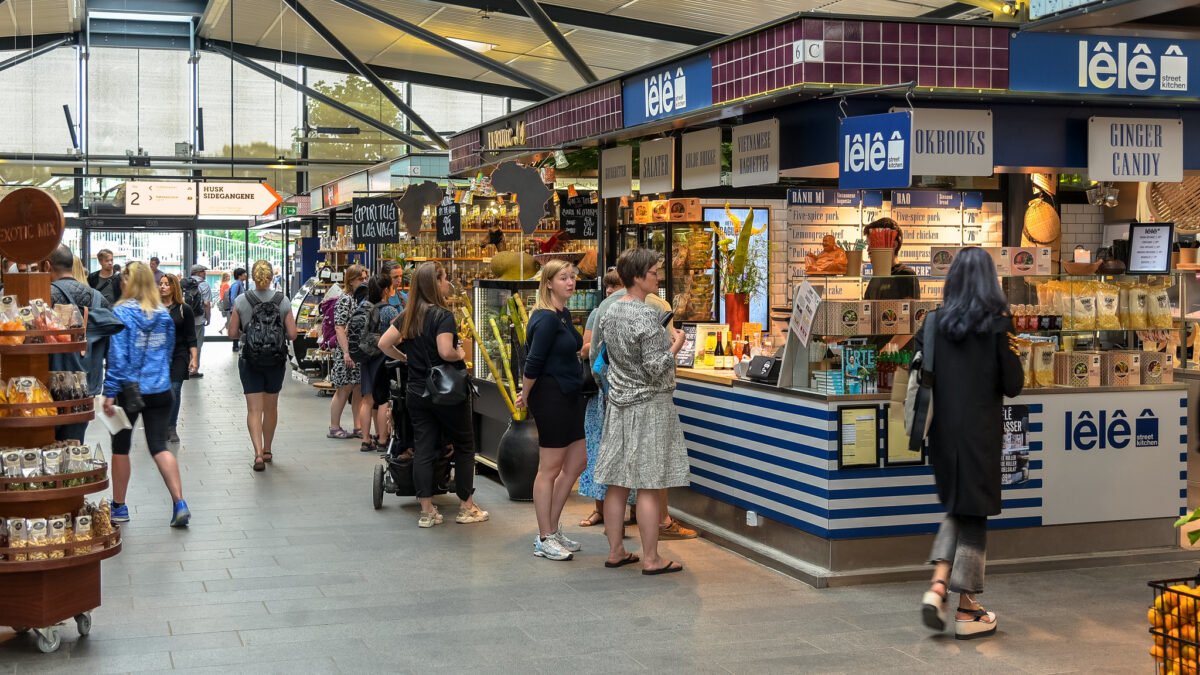
What to do and see in Copenhagen, day 3?
Strøget Shopping Street – Google Maps Link
Start off the morning with a walk down Strøget. This pedestrian-only street is filled with cool shops and restaurants. Shops include well-known budget-friendly stores like Zara and H&M alongside designer stores like Louis Vuitton and Giorgio Armani. For Danish fashion, check out Mads Nørgaard and & Other Stories. No matter how old you are, make sure to browse through Lego’s flagship store on Strøget.
Torvehallerne Market – Google Maps Link
Make your way to Torvehallerne Market right in the center of Copenhagen to see the fresh food market. You can browse around the stalls selling fresh produce, fish, meat, cheese, and various pastries. You can come here for lunch or just spend time enjoying the atmosphere.
Vesterbro Neighborhood – Google Maps Link
In the afternoon, explore the Vesterbro neighborhood. While this area was once best known for being the city’s red-light district, the neighborhood attracts visitors thanks to its cool atmosphere today. Browse through the area’s trendy boutiques or edgy secondhand shops. Visit the Meatpacking District in the center of Vesterbro to find the best restaurants, art galleries, and fun nightclubs in the city.
Where to eat in Copenhagen, day 3?
- Stop at the Royal Smushi Cafe on Strøget to sit and sip on a drink and have a small bite while taking a break from shopping.
- If you’d like a more substantial meal while shopping, stop by Riz Raz for Mediterranean-style cuisine.
- At Torvehallerne, you’ll find the best coffee at Coffee Collective (a chain).
- You can also get a great classic sandwich at Hallernes Smørrebrød (a chain).
Day 4: Frederiksborg Castle Day Trip
Travel time: 1 hour train + walk.
Take a day trip to Hillerød to see Frederiksborg Castle just a short distance from Copenhagen. The castle is often called the Versailles of Denmark. If you want to visit more than one castle today, you can also visit Kronborg Castle in Helsingør.
How to get to Frederiksborg Castle?
This is easy! To get to Frederiksborg Castle, you must take a train from Copenhagen’s main train station to Hillerød st. Upon arriving at Hillerød st, you must walk around 20 minutes to reach Frederiksborg Castle.
Trains take 38 minutes and run every 20 minutes. Tickets cost 74kr ($7 USD) one-way as of March 2023.
You can book tickets online, and view the train timetable on the official Danish railway website. In addition, we have made the route on Google Maps which you can view here.
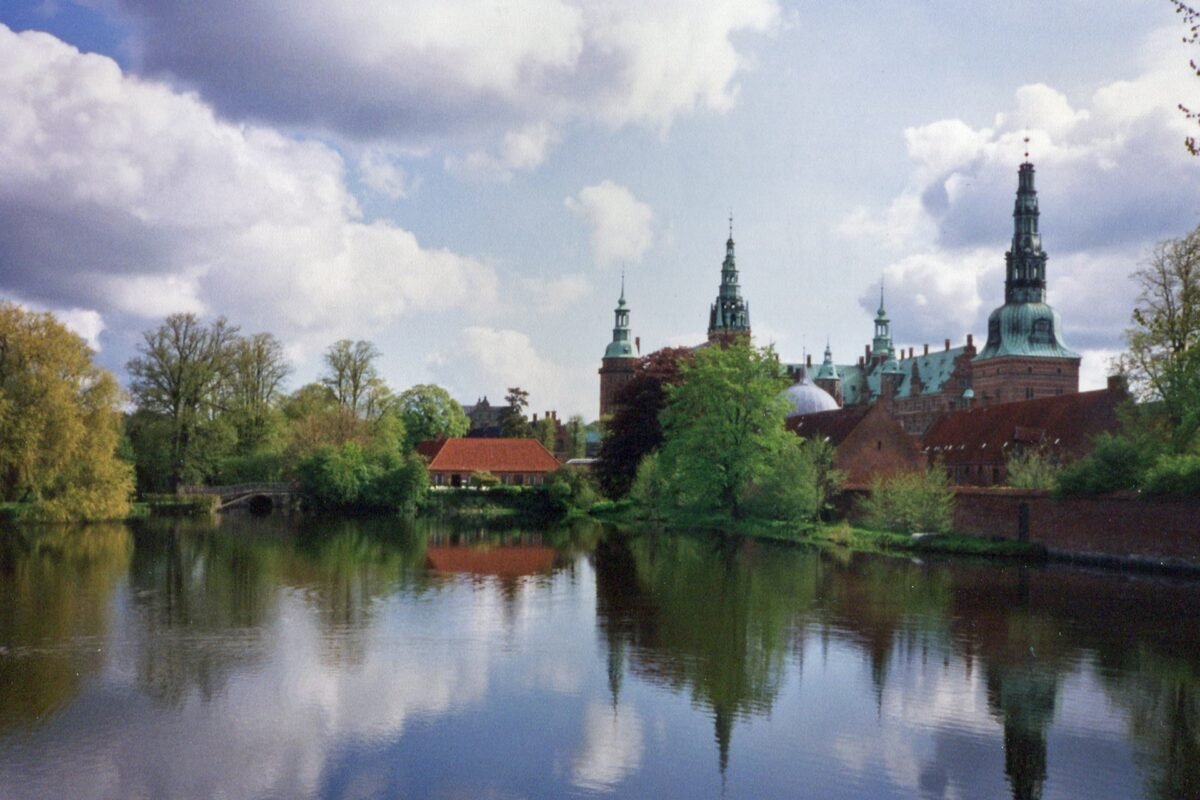
What to do and see near Frederiksborg Castle?
Frederiksborg Castle is located on three islands in the middle of a lake. The castle, built by King Christian IV in the 17th century, is the largest Renaissance castle in Scandinavia. The castle now houses the Museum of National History.
As you explore the museum, you find portraits, paintings, and other objects representing 500 years of Danish history. After seeing the museum, take time to enjoy the beautiful baroque garden with cascades and parterre flower beds.
Fancy another castle?
It takes under an hour to get from Frederiksborg Castle to Kronborg Castle by train if you decide you want to visit both in one day. See the Google Maps route here. Literature lovers should definitely make the trip to Kronborg castle as it’s the castle where Shakespeare set his play Hamlet in.
Kronborg Castle is a UNESCO World Heritage Site. Each day multiple guided tours take place. You can also explore the crypts and catacombs under the castle.
Where to eat near Frederiksborg Castle?
- While visiting Frederiksborg Castle, you can eat at the Leonora restaurant. Named after Christian IV’s favorite daughter, this a la carte restaurant overlooks the castle lake and is located in a building originally used as the castle’s stables in the 1600s.
Where to eat near Kronborg Castle?
- If you’re interested in getting dinner in Helsingor after visiting Kronborg Castle, try out La Dolce Vita for delicious authentic Italian dishes.
Day 5: Dragør
Travel time: 30-40 minutes by train, then bus.
Enjoy one of Denmark’s charming villages on a day trip to Dragør from Copenhagen. Dragør is a fishing village located on the island of Amager. The village itself is beautiful and its surrounding are equally scenic. It was founded as a fishing port in the 12th century and was further settled in the early 16th century.
How to get to Dragør?
To reach Dragør, take a train from Copenhagen Central Station to Tårnby, then from Tårnby, catch a 20 minute bus to Dragør. You can view the route on Google Maps here.

What to do and see in Dragør?
Dragør is a complete change of pace from the bustling activity in Copenhagen despite being only about 8 miles away. If you would rather bike instead of taking the bus to Dragør, it would take you roughly 45 minutes to get there.
One of the best things to do in the village is to visit Dragør Old Town. This area has narrow cobblestone streets lined with pastel painted houses built in the 1700s. As you walk along the streets, make your way to the promenade near the sea. Here you’ll be able to see the Amager coast and get a view of the Oresund Bridge which connects Copenhagen to Malmo, Sweden. Nearby, you’ll also find Dragør Fort. Built in 1910, this fort has been converted into a hotel, but it’s open to the public and you can climb to the top to see the views.
Despite being a small village, you’ll find lots of museums in Dragør. Pick one or two that interest you to visit. The Pilot Museum is one of the most popular museums and houses exhibits showcasing 400 years of piloting history. The Dragør Museum has exhibits on the history of seafaring. And, the Mølsted Museum is a small museum showcasing art by marine painter Christian Mølsted, a local artist who lived from 1860 to 1930.
If you would like to explore the beaches, MorMor Beach has beautiful views of the Oresund bridge. It’s also a good location for families to visit. Dragør South Beach is another favorite beach. You can take a walk along the paths or swim in the clear waters. You might even spot some seals.
Where to eat in Dragør?
- Try out Cafe Espersen for traditional Danish dishes. During the summer, it’s especially nice to enjoy the view of the harbor while eating fresh seafood and sipping a glass of cold rosé.
- Another good option is Cafe Sylten. This cozy restaurant located right by the sea is the perfect place to enjoy the brunch buffet offered every weekend.
Day 6: Aarhus
Travel time: 3 hours by train from Copenhagen Central Station.
Aarhus is Denmark’s second-largest city. This beautiful Danish city is located by the sea on Denmark’s northeast coast. While you could fly from Copenhagen to Aarhus, taking the train is more enjoyable. While Aarhus is sometimes overshadowed by the capital city, Aarhus is quickly gaining attention thanks to its amazing restaurants, vibrant nightlife, and architectural landmarks. Escape from the crowds and enjoy your time in Aarhus.
How to get to Aarhus?
Take a train from Copenhagen Central Station to Aarhus. Ticket prices range from 100-400kr ($10-40 USD) one-way depending on your departure time. You can book tickets online, and view the train timetable on the official Danish railway website.
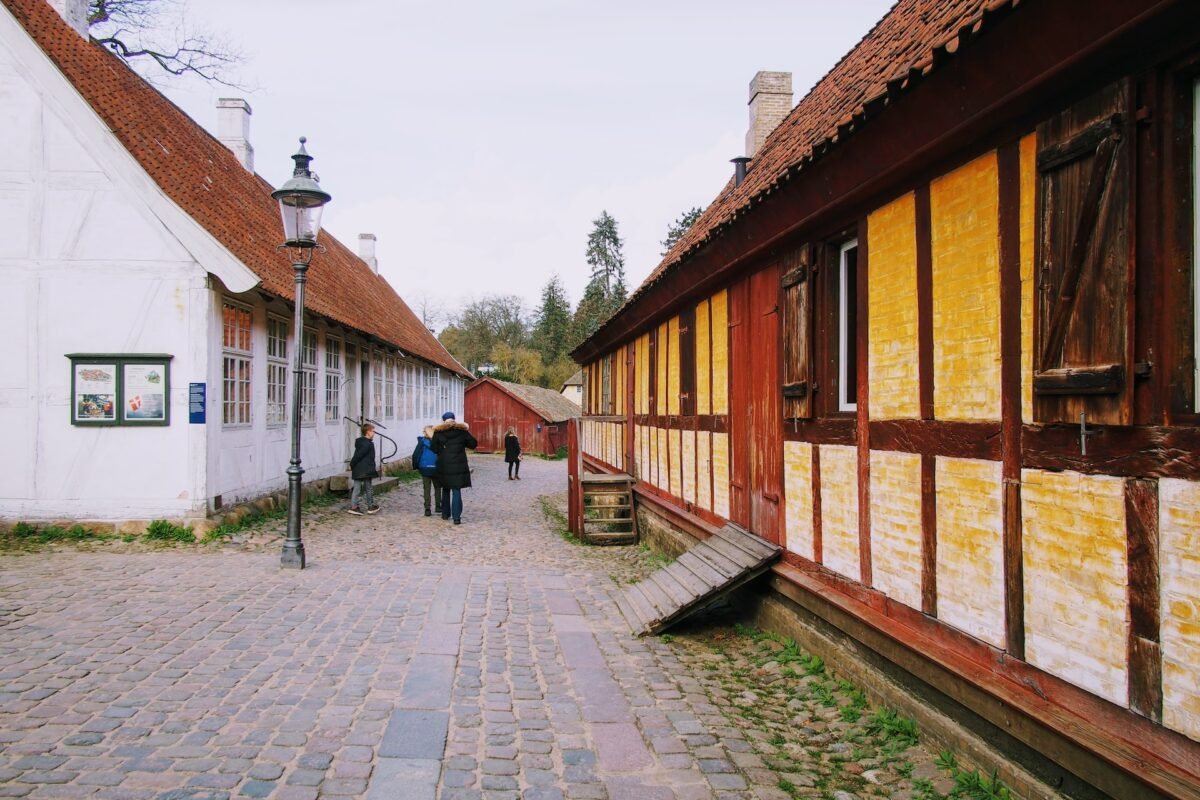
What to do and see in Aarhus, day 1?
Den Gamle By – Google Maps Link
On your first day in Aarhus, spend your time learning about the area’s history and visit a few of the city’s neighborhoods. One of the biggest attraction in the city is Den Gamle By (The Old Town). This open-air museum contains authentic Danish building relocated to the museum from all over the country. It is set up to recreate Danish neighborhoods from 1927 and 1974. There are also museums and galleries located in some of the buildings. You could easily spend half the day wandering around this unique open-air museum.
Latin Quarter – Google Maps Link
While in Aarhus, be sure to visit the Latin Quarter, an area full of colorful houses, hip cafes, trendy boutiques, and art galleries. You’ll also find several medieval churches in this area. Trinitatis Kirke was built during the 17th century, and Vor Frue Kirke has the oldest bells in Denmark.
The most popular place to be in the Latin Quarter is Pustervig Torv Square. Here you’ll find unique boutiques and art galleries located all around the square. In the evening, stop by Mig og Ølsnedkeren in the Latin Quarter to try out the microbrews on tap.
Where to eat in Aarhus, day 1?
Aarhus has a growing culinary scene and has won awards for its gourmet dining options.
- For a nice Italian, check out Grappa Aps, located in the heart of Aarhus.
- For an elegant meal, head to L’Estragon. You find seasonal plates made from organic ingredients.
- If you’re interested in having seafood, Oli Nico is the place to go. The restaurant feels like a cross between a British fish and chip shop and a French bistro.
Where to stay in Aarhus?
- $$$ – Villa Provence Hotel
- $$ – Hotel Oasia
- $ – Cabinn Aarhus Hotel
Day 7: Aarhus
Prepare to make the most of your final day in Denmark. Finish up your weeklong trip with a few Aarhus’s popular attractions. Today, you’ll visit several museums, walk through beautiful gardens, explore the marina, and, of course, enjoy delicious cuisine. It’s no wonder that Aarhus was named one of the European Capitals of Culture several years ago.

What to do and see in Aarhus, day 2?
ARoS Aarhus Art Museum – Google Maps Link
Aarhus has several world-class museums. The ARoS Aarhus Art Museum is a must-visit. With 9 floors of exhibitions, it’s one of the largest museums in Northern Europe. It’s most famous exhibit is the rainbow panorama, a glass walkway on the museum’s rooftop.
Moesgaard Museum – Google Maps Link
Another good museum to visit is the Moesgaard Museum. This museum is dedicated to archaeology and ethnography.
Aarhus Botanic Garden – Google Maps Link
While in Aarhus, make sure to visit the Botanic Garden. It’s one of the largest parks in the city, and it’s the perfect place to spend the afternoon exploring the grounds. The park also has a tropical house with four different climate zones. One of the zones even has a large treehouse. The Botanic Garden is worth visiting yearround.
Aarhus Yacht Marina – Google Maps Link
Another popular place to visit is the Aarhus yacht marina (Aarhus Lystbådehavn). You can rent a paddle board and wetsuit to get out on the water. Even if you’re not interested in paddle boarding, it’s a lot of fun to walk through the marina and see the beautiful sail boats. Make a stop at the Harbor Bath while you’re there. The complex is made up of a swimming pool, a diving pool, children’s pools, and two saunas.
Where to eat in Aarhus, day 2?
- Enjoy some baked goods first thing in the morning at Langenæs Bageriet.
- If you want to have brunch try out Globen Flakket for a cozy meal next to the canal.
- Or try out one of the city’s trendy modern restaurants: At Spiselauget, you can enjoy delicious gastropub-inspired food made with local seasonal ingredients.
After visiting Aarhus you can either continue your travels from there, or catch a train/flight back to Copenhagen to return home.
Useful tips for traveling in Denmark:
Now that you know what to do during your visit to Denmark, here are a few tips to make your trip go smoothly.
- No matter what season you’re visiting, pack clothes you can layer.
- Getting a city card in Copenhagen can help reduce the amount of money you spend during your trip.
- Danes are courteous and follow rules. They expect the same from visitors as well.
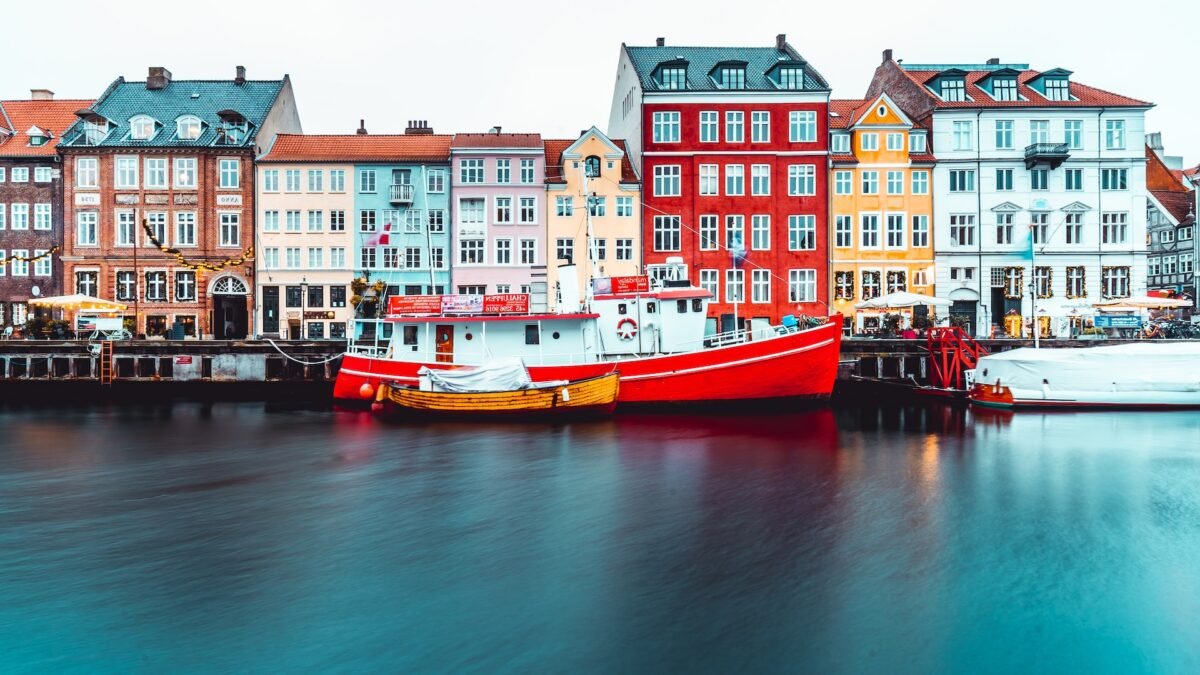
The best time to visit Denmark:
The best time to visit Denmark is during the summer months: June, July, and August. The daylight hours are the longest during these months and the weather is just warm enough to be pleasant while exploring.
With this being said, any time of year is good to go if you’re prepared to dress for it. I have been in the depths of winter before and loved it! Hygge is a concept from Denmark afterall!
What is the currency of Denmark?
The currency of Denmark is the Danish Krone (kr)
Can you drink tap water in Denmark?
Tap water in Denmark is safe to drink. Denmark works hard to protect their groundwater from contamination and pollution. As a result, the water in the country is some of the cleanest water possible. Most people also find that the water tastes good straight from the tap.
The language of Denmark:
Danish is the official language of Denmark. Many people in Denmark speak English, and you’ll also find German or French on road signs.
Here are a few basic expressions in Danish that are nice to know when traveling in Denmark.
Goddag – Good day
Hej – Hello
Farvel – Goodbye
Ja – Yes
Nej – No
Tak – Thank you
Undskyld – Excuse me
Is Denmark safe?
Denmark is ranked as one of the safest countries in the world. The crime rates in Denmark are relatively low, and the risk for the usual dangers travelers tend to face is low as well. Still, you should use common sense and remain alert in any situation you find yourself in.
Final thoughts:

All that’s left to do is to pack your bags and head to Denmark. There are so many interesting and beautiful sites to see in Denmark, but you’ll be able to enjoy a few of the best things the country has to offer during your weeklong visit.
As you plan your visit, make sure to take a look at all of our guides to Denmark. If you’re planning to visit other Scandinavian countries, we also have guides to Norway, Sweden, and Finland.
If you have any comments on the itinerary or have any suggestions, please be sure to leave me a comment! And, most importantly, stay Earth Curious!







